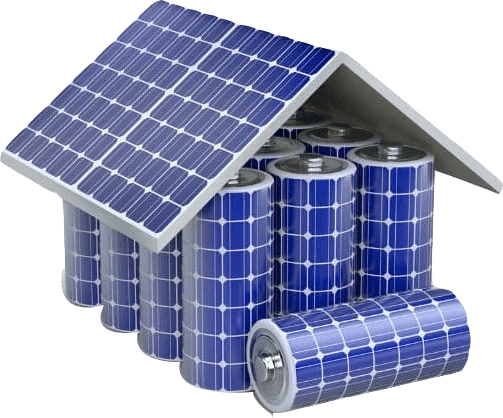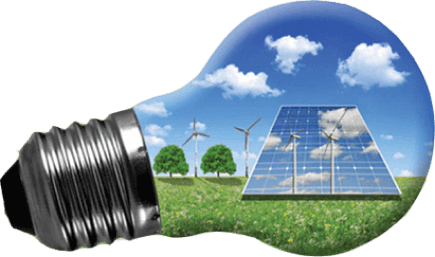Why Solar Energy Is Important?
Electricity generation is the leading cause of industrial air pollution in the Australia, Strong consensus in the scientific community states that climate change and global warming are occurring and are caused by human production of carbon dioxide and other greenhouse gases. Climate change may also damage agriculture, cause widespread extinctions imperil clean water supplies and aid the spread of tropical diseases.
Most of our electricity comes from coal and non-renewable power plants. In order to secure the future for ourselves and generations to follow, everyone accepted that we must act now to reduce energy consumption and substantially cut greenhouse gases, such as carbon dioxide.
How Do Photovoltaic Work?
PV solar panels create power by converting sunlight into electricity, producing clean energy. A PV cell or solar cell is the semiconductor device that converts sunlight into electricity. These cells are combined to form panels which, in turn, are combined to create what are called arrays, the solar generation systems which connect to the energy grid. The efficiency of each solar panel is measured by its ability to absorb light particles called photons.
The more photons that are absorbed, the more efficient the panel is at converting light into electricity. When photons strike the solar cells contained in a solar panel, they can be reflected, absorbed, or pass through the panel. When photons are absorbed, they have the energy to knock electrons loose, which flow in one direction within the panel and exit through connecting wires as solar electricity, ultimately providing power.
Advantages of Solar Energy in Australia
Solar can Help you Save Money
The sun doesn’t send you a bill – its energy is completely free. Once you have solar panels installed, every unit of power they generate is electricity you don’t need to buy from the grid. Plus, if your system produces more energy than you use, you can send the extra back to the grid and earn credits on your power bills.
Solar is Clean and Sustainable
Unlike fossil fuels, solar energy comes from an endless natural source – the sun. It’s a renewable option that helps reduce our dependence on limited resources. Better still, generating electricity with solar panels doesn’t create pollution, making it a much cleaner way to power your home.
Is Solar Power Worth It Nowadays?
That really depends on your lifestyle, home, and energy needs. Here are a few things to think about before deciding:
- It’s a Long-term Investment
Solar panels do require an upfront cost, but think of them as an investment in your future. Over time, the savings on your electricity bills can outweigh the initial expense. If you’re planning to stay in your home for a while, solar can pay off – and even boost your property’s value. Don’t forget to check for rebates, incentives, and financing options that can help reduce the initial outlay.
- How you Use Energy Matters
Solar panels only generate electricity during the day. If your home is mostly empty while the sun’s out, you might not be using much of the free power you’re producing. While you can still earn credits for sending excess energy back to the grid, you’ll usually save the most if you can shift some of your energy use (like running appliances) to daylight hours.
- Storing Solar for Later
If you’d rather use your own solar power at night, a battery system can store the energy your panels generate during the day. This allows you to use more of your own clean power, though it does mean a bigger upfront investment.
- Your Home’s Setup Matters
Not every home is perfect for solar. To get the best results, your panels need plenty of direct sunlight. Things like shading from trees, nearby buildings, or the angle of your roof can affect performance. A professional installer can give you tailored advice on whether your property is solar-friendly.
- Savings can Vary
Government incentives and rebates can make solar much more affordable – but what you save will depend on your home, your location, and your energy usage. It’s worth talking to a few solar installers to see what kind of savings and support you could qualify for.
How Solar Energy Can Help Reduce Your Electricity Bills?
One of the biggest reasons homeowners choose solar is simple: it can cut down your electricity costs. Once you install a solar PV system on your roof, the sunlight powering your home is completely free. The more solar energy you use, the less electricity you’ll need to buy from the grid—which means smaller bills each quarter.
And if your panels generate more electricity than your household uses during the day? Many energy providers in Australia, like AGL and Origin, offer feed-in tariffs. This means you can send the extra power back into the grid in exchange for credits on your electricity bill. Those credits often help cover the cost of the grid electricity you’ll use at night or when the sun isn’t shining.
In short:
The less grid power you rely on, the lower your bills. Extra solar energy can earn you credits through feed-in tariffs. Once your system pays for itself, the savings really start to add up. With so much sunshine available in Australia, solar isn’t just good for the planet, it’s also a smart financial move.
Solar Power in Cloudy Weather and Colder Climates
A common question is: do solar panels still work when it’s cloudy or cold? The good news is yes, they do.
While panels perform best in full sun, they still generate power on cloudy days. That’s because sunlight, even when diffused through clouds, still provides enough energy for your system to keep producing electricity. Germany, which often has grey skies, is proof of this, it’s one of the world’s top users of solar power.
When it comes to colder weather, solar panels can actually be more efficient. Heat can reduce panel performance, while cool conditions often help them work at their best. So whether you’re in the bright outback sun or facing a chilly southern winter, solar panels will reliably keep producing clean energy all year round.
The Future of Solar Energy in Australia
Australia is one of the sunniest places on earth, making it a perfect fit for solar energy. Rooftops across the country are turning into power stations, with Australians installing record levels of solar in recent years. For example, in 2020 alone, households added about 3 gigawatts of rooftop solar capacity, a clear sign of the growing shift to renewable energy.
But as more homes start generating and sharing their own electricity, our energy system is changing. Power is no longer just flowing one way, from power plants to homes. Now, households are feeding energy back into the grid, which is great for sustainability but creates new challenges for the network.
Navigating the Solar Transition
As solar adoption grows, Australia needs to modernise its electricity grid to keep up. Too much solar exported at once can cause issues like voltage fluctuations or even blackouts. Here are some of the solutions being explored:
Upgrading the Grid: Investment in infrastructure is essential to handle the rising flow of solar energy.
Smart solar management: New tech allows utilities to monitor and sometimes pause exports when the grid is overloaded, though this raises questions about fair compensation.
Home batteries: Storing extra solar at home is becoming more affordable and reduces the need to push energy back to the grid.
Virtual Power Plants (VPPs): By linking household solar and batteries together, communities can act like small power stations, helping stabilise the grid.
Electric vehicles (EVs): As EVs become more popular, charging them during sunny hours is another way to make smart use of surplus solar energy.
A Bright Road Ahead
The path to a solar-powered future won’t be without challenges, but the momentum is undeniable. With organisations like the Clean Energy Council and companies such as Tesla driving innovation, Australia is on track to make solar an even bigger part of everyday life.
If you’re considering making the switch, it’s worth talking to accredited solar professionals. They can help you design a system that not only lowers your bills but also supports Australia’s shift to cleaner, smarter energy for everyone.
Solar Energy Facts to Check-out
Back in 2020, small-scale solar surpassed hydropower to become the second-largest renewable energy source in Australia.
Commercial solar is advancing rapidly, with projects like the DHL distribution centre in Western Sydney demonstrating new models. The site not only generates electricity for its operations but also participates in the wholesale energy market.
At the residential level, average solar system sizes have expanded considerably, growing from 1.97 kilowatts (kW) in 2010 to 8.04 kW by 2020.
Larger projects also bring greater technical challenges. For example, the installation of PV panels at Woolworths’ Sydney headquarters required the use of helicopters to position equipment.
Looking ahead, the Sun Cable project in the Northern Territory, scheduled to begin operations in 2026, is set to become the world’s largest solar farm. Its storage capacity will include a battery system 150 times the size of South Australia’s Hornsdale Power Reserve.





















